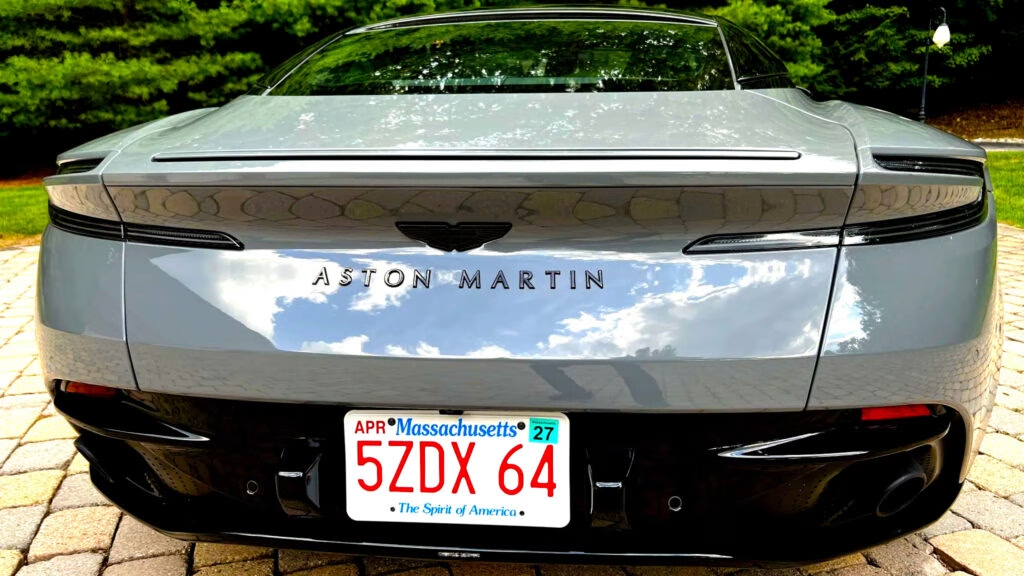Why Did This Aston Martin DB11 Lose So Much Value So Quickly?
Imagine spending nearly $277,000 on a brand-new Aston Martin DB11, only to see its value drop by over $100,000 in less than two years—and with barely 500 miles on the odometer. That’s exactly what happened with a 2023 DB11 that recently changed hands for just $174,000. The story behind this rapid depreciation is a cautionary tale for anyone eyeing a high-end sports car as an investment.
How Do Factory Options Affect Resale Value?
This particular DB11 wasn’t just any base model. The original buyer splurged on more than $40,000 in factory options: a $9,000 Bang & Olufsen BeoSound audio system, $3,200 for 20-inch black wheels, $1,600 for ventilated seats, $1,600 for black badges, $1,200 for smoked taillights, and over $10,000 in interior upgrades, including $2,100 worth of piano black trim. The car wore a subtle China Grey paint job with black accents—tasteful, not flashy.
You’d think such a well-specced, conservatively styled car would hold its value better. In reality, those pricey options rarely recoup their cost when it’s time to sell. According to data from automotive market analysts like J.D. Power and Kelley Blue Book, optional extras often add little to resale value, especially on luxury vehicles. Buyers in the used market tend to focus on the base car’s desirability and overall condition, not the original owner’s taste in sound systems or trim.
What Role Did the DB12 Play in the DB11’s Depreciation?
Timing is everything. In mid-2023, Aston Martin introduced the DB12, a direct successor to the DB11. The new model brought more power, a modernized interior, and sharper styling. Suddenly, the DB11—despite its 630-horsepower, twin-turbo V12 and eight-speed automatic—looked a little dated.
The impact was immediate. When the DB11 first hit the used market, it sold for $190,000 with just 290 miles on the clock. Less than a year later, it fetched $174,000 after only 207 more miles. The original owner lost $86,786, and the second owner took a $16,000 hit. Ouch.
This isn’t unique to Aston Martin. Whenever a new generation debuts, the outgoing model’s values typically take a nosedive. It’s especially pronounced with luxury GTs, where buyers often want the latest tech and design. The DB12’s arrival was the final nail in the DB11’s short-lived resale value.
Is the DB11 Still a Great Car, Despite the Depreciation?
Let’s not lose sight of what the DB11 offers. Under the hood, you get a 5.2-liter twin-turbo V12 with 630 hp and 516 lb-ft of torque. That’s enough to rocket you from zero to 60 mph in around 3.7 seconds, with a soundtrack that’s pure automotive theater. The cabin, loaded with premium materials and high-end tech, is a lovely place to spend time—even if the infotainment is a generation behind.
For driving enthusiasts, the DB11 remains a compelling grand tourer. It’s comfortable, blisteringly quick, and turns heads everywhere it goes. If you buy one used, you’re getting a lot of car for the money—assuming you’re not worried about future depreciation.
What Can Buyers Learn from This Aston Martin’s Story?
The DB11’s dramatic drop in value highlights a few key lessons. First, buying a brand-new luxury sports car is almost never a sound financial investment. Depreciation hits hardest in the first couple of years, and expensive options rarely pay off at resale. Second, timing matters: a new model launch can instantly devalue its predecessor, no matter how well-optioned or lightly used.
If you’re set on owning a car like the DB11, consider shopping for a gently used example. Let someone else take the depreciation hit. And if you’re tempted by a long list of factory options, remember: what’s special to you might not matter to the next owner.
The big takeaway? Chasing the perfect spec or the latest model isn’t about perfection—it’s about smarter adjustments. Start with one change this week, and you’ll likely spot the difference by month’s end.

